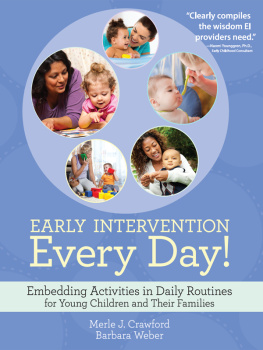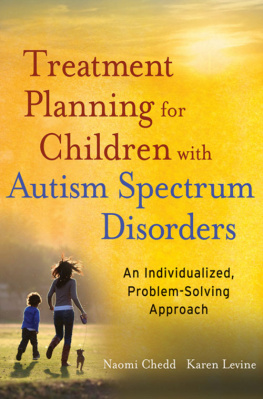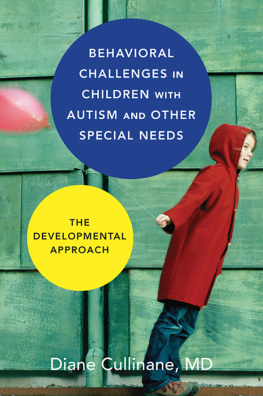Table of Contents
Floortime Strategies to Promote Development in Children and Teens
Floortime Strategies to Promote Development in Children and Teens
A Users Guide to the DIR Model
by
Andrea Davis, Ph.D.
Lahela Isaacson, M.S.
and
Michelle Harwell, M.S.
Paul H. Brookes Publishing Co.
Post Office Box 10624
Baltimore, Maryland 21285-0624
www.brookespublishing.com
Copyright 2014 by Paul H. Brookes Publishing Co., Inc.
All rights reserved.
Paul H. Brookes Publishing Co. is a registered trademark of Paul H. Brookes Publishing Co., Inc.
DIR and DIRFloortime are registered trademarks of The Interdisciplinary Council on Developmental and Learning Disorders, Inc.
Typeset by Cenveo, Inc., Stamford, Connecticut.
Manufactured in the United States of America by Sheridan Books, Inc., Chelsea, Michigan.
Cover image istockphoto/vitapix
All of the case studies in this book are composites of the authors actual experiences. In all instances, names and identifying details have been altered to protect confidentiality.
Library of Congress Cataloging-in-Publication Data
The Library of Congress has cataloged the print edition as follows:
Davis, Andrea Lee, 1961
Floortime strategies to promote development in children and teens: a users guide to the DIR model / by Andrea Davis, Ph.D., Lahela Isaacson, M.S., and Michelle Harwell, M.S.
pages cm
Includes bibliographic references and index.
ISBN 978-1-59857-734-1 (pbk.)
ISBN 978-1-59857-821-8 (EPUB)
1. Parents of developmentally disabled childrenUnited States. 2. Developmentally disabled childrenmental healthUnited States. 3. Developmentally disabled childrenpsychologyUnited States. 4. Child psychologyUnited States. I. Isaacson, Lahela. II. Harwell, Michelle. III. Title.
HQ759.913.D39 2014
306.874dc23
2014011147
British Library Cataloguing in Publication data are available from the British Library.
Version 1.0
Contents
Serena Wieder
About the Authors
Andrea Davis, Ph.D., Director and Founder, Greenhouse Therapy Center, 685 East California Boulevard, Pasadena, California 91106
Andrea Davis received her B.A. in psychology from Swarthmore College, M.A. in theology from Fuller Theological Seminary, and Ph.D. in clinical psychology from Fuller Graduate School of Psychology. She completed her postdoctoral fellowship in infant mental health and early childhood disorders at Brown University Medical School. She returned to the west coast to join the UCLA Department of Pediatrics as Director of Research for the FOCUS project intervention study and to open a private practice in Pasadena, California. This practice grew into Greenhouse Therapy Center, a psychological center providing psychotherapy to individual adults, couples, parents, adolescents, and children from an attachment theory perspective. Greenhouse also offers intensive in-home Floortime or relationship-based developmental intervention for children and adolescents with developmental disorders and their families.
Lahela Isaacson, M.S., LMFT, DIRFloortime Supervisor and Program Manager, Greenhouse Therapy Center, 685 East California Boulevard, Pasadena, California 91106
Lahela Isaacson has devoted her professional career to working with children with special needs using the DIRFloortime model. Ms. Isaacson received her B.A. in psychology from Pepperdine University. She earned her M.S. in marriage and family therapy from Seattle Pacific University. Soon after graduating she was introduced to the DIRFloortime model and was captivated. Ms. Isaacson currently works at Greenhouse Therapy Center as a DIRFloortime supervisor and program manager.
Michelle Harwell, M.S., LMFT, Owner, Michelle Harwell Therapy, 2120 Colorado Boulevard, Suite 2, Los Angeles, California 90041
Michelle Harwell is an expert training leader and supervisor in DIRFloortime and an infant mental health and early intervention specialist. She maintains a thriving private practice in Los Angeles, California, where she sees clients across the age spectrum: infants, children, adolescents, and adults. She also works as an infant mental health consultant at Elizabeth House, where she helped to secure grant funding through the Pasadena Child Health Foundation to provide motherinfant psychotherapy to at-risk homeless mothers. Ms. Harwell received her B.A. in English literature from the University of Oklahoma, M.A. in theology from Fuller Theological Seminary, and M.S. in marriage and family therapy from the Fuller Graduate School of Psychology. She dedicated her postgraduate training to the areas of development, attachment, trauma, and neuroscience and is currently completing her Ph.D in psychoanalysis from The Institute for Contemporary Psychoanalysis. Ms. Harwell is a well-respected speaker, trainer, and supervisor who provides professional development and consultation to therapists and families.
Foreword
Floortime belongs to everyone. Joining in play with a child or adolescent conveys a message: I am here with you, to find out what interests you, to play with you, and to enter your world. We can tickle or roughhouse and laugh together. We can pretend to be your favorite characters, arm your knights before the pirates get to your castle, or check out your favorite music, videos, or games. I will join you, follow your ideas, and we will play together to feel close, to have fun, to discover, to find the gleam in your eye!
This book provides strategies and guidance to parents, teachers, therapists, and aides for finding these pathways to each childs heart and mind. The approach presented is called Floortime to highlight the importance of real, in-person interactions, although Floortime may take place anywhereon the floor, on a couch, on a walk. The goal is always to entice a child or a teen into close, warm, interactive relationships. Fostering these relationships is especially important for children with special needs.
Floortime is both a theory and an intervention method. It is the theory at the heart of the DIR model that Dr. Stanley Greenspan and I created, and it is an intervention method that can be either the primary method or used along with other intervention approaches parents may choose. It is a systematic approach with a sound theoretical model and research-based neuroscientific support for the active ingredients in intervention. The relationships forged during Floortime pave the way for all aspects of development and brings them together. Wooing the child or adolescent into relationships and interaction, understanding his or her individual differences, and tailoring interactions to support engagement are all ways to seize the neuroplasticity of the brain by providing experiences that can create missing neural interconnections. The Floortime strategies in this book illustrate how parents and professionals can build the foundations for the types of relationships that promote lifelong learning.
The DIR model was originally developed through our Clinical Infant Development Program, a longitudinal National Institute of Mental Health study of infants and parents from multi-problem families. Our goal was to offer preventive intervention to newborns in families where prior children had evidenced problems, with the hopes of building better foundations for the newborn and helping families support their childrens development. Armed with psychodynamic, cognitive, and social theories of development, we learned about addressing individual differences in sensory motor processing, and we identified the primary active ingredient in supporting development: affect. We then brought this to our work with regulatory and autism spectrum disorders.











